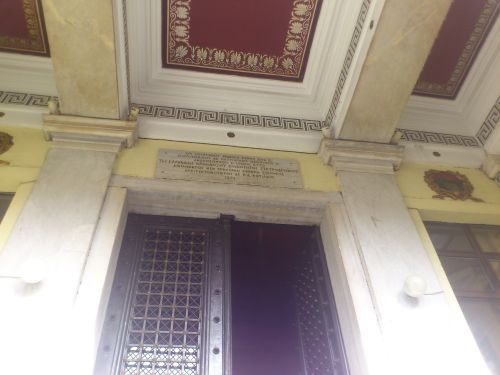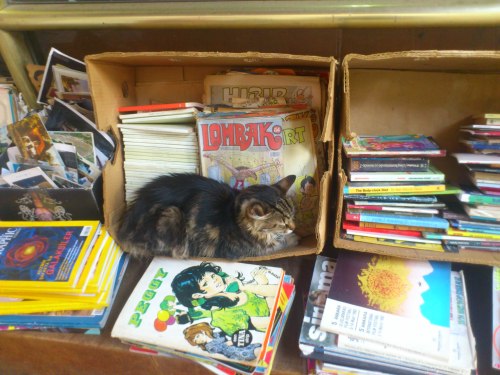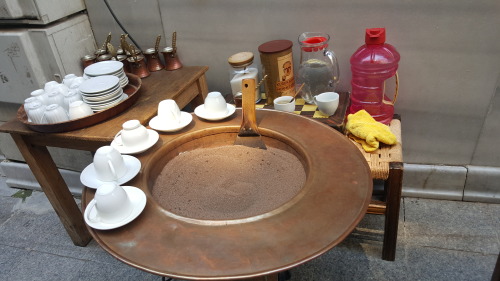
How could someone paint Beyoğlu with only a few colors or describe it in a few, simple words? I will never forget the vivid descriptions of my great-grandmother, Helen, who seemed to have erased from her memory all the unpleasant events that marked the Greek community and her life. She was always talking about “her” Istanbul and her neighborhood in Beyoğlu with great nostalgia, and one of her dreams was to come back at some point.
I feel blessed to have been given the opportunity to visit, for the second time, the places where she grew up, wander the same streets she played in as a child, and light a candle in the Orthodox churches where she prayed. For Helen, Istanbul was her home, her soul, her world! For me, it is a part of her memories and thoughts, a world full of colors, smells, dancing, and praying.
From the first days of my stay here, I felt like a member of this multicultural family that embraces people with different languages, beliefs, and identities. I was immediately impressed by the marriage of Eastern and Western elements, as well as strong contrasts. Every day, thousands of people from all over the world roam the Grand Avenue of Pera, which starts in Taksim Square and ends at the northern end of Galata.
I usually start my day with a quick visit to the church of The Entry of the Most Holy Theotokos into the Temple, commonly known among the Greeks of Istanbul as Panagia tou Peran or tou Stavrodromiou (i.e., at the Crossroads), which is almost hidden at the end of an alley off İstiklâl Caddesi. The diffuse and sweet silence makes me forget that I live in the very heart of the city! I feel very moved when I open the door of this church, since I remember the last time that I saw there the nice colleague and former fellow of ANAMED, Vangelis Kechriotis, who left this life so young and is now resting at the Greek-Orthodox cemetery in Şişli. I immediately fix my attention on the Russian-style wall paintings, which depict the lives of Saint Mary and Jesus Christ. Nowadays, the journalist Dr. Symeon Soltarides, who comes from an old family of Istanbul, is always willing to give me details about the history of the church or the traditions and legends regarding its construction. Sometimes, I make a stop at the splendid church of the Holy Trinity (Hagia Triada), the main Greek Orthodox church of Beyoğlu, whose belltowers are visible from afar, especially from Taksim Square. At the Divine Liturgy on Sunday, you can see Orthodox people of many different ethnicities, not only Greeks, but also Serbians, Bulgarians, Romanians, Russians, Ukrainians, and others, who come for religious purposes, as well as to admire the majesty of the neo-baroque church with the neo-gothic façade and its beautiful icons.


But prayer in Beyoğlu can take place everywhere, regardless of someone’s religious beliefs, either in an Orthodox or Catholic church or a mosque. What matters above all is the respect for those who make an address to the Supreme Being! The domes of the churches, the minarets of the mosques, the sound of the bells, and the prayers delivered by the imam create a unique atmosphere, which one can hardly find in any other city of the world.
In an alley of Beyoğlu, I hear the voices of the students at the Greek school Özel Zoğrafyon Rum Lisesi, where love for education and passion for the preservation of this historical monument remains lively after about 129 years. The director, Mr. Ioannis Dermitzoglou, continues his predecessors’ work with patience, affection, and, first and foremost, the aspiration to preserve tradition and pass on the torch to newer generations. I had the luck to spend some hours at the school. A harmonic blend of traditional and modern elements is fairly visible, and the responsibility to be a student or a teacher in this ‘’sacred’’ place, where important people studied in the past, is enormous. On the other hand, this haven, which hugs the younger generations, makes us feel proud of the pupils and instructors, who work there zealously and selflessly.

A few hours later, Beyoğlu “changes face and character.” Sometimes, I form the impression that I am immersed in a chaotic world, where I cannot move and breathe. A series of images unfolds in front of my eyes and makes me feel confused: tourists are frantically taking pictures, as if this world will be lost tomorrow, others hurry and push me in order to find a place in one of the central patisseries and restaurants, while youths enjoy their drinks in the balconies of pubs, in the alleys, and even on the sidewalks. Furthermore, I feel very impressed when I observe the different sense of fashion and style of pedestrians who walk İstiklâl Caddesi. Some remain devoted to the traditional way of dressing, and others are up with the latest trends, capturing the eyes of passers-by. I can also see elegant, modern women, sometimes covered with their colorful hijab, others who are dressed in burka, and some who prefer to be totally revealing, leaving no room for imagination. Sometimes, I cannot discern the boundaries between the optional choice or the conventions of society; I cannot perceive the hidden conservatism or the far-fetched modernism; I cannot perceive the human limits. However, the dancing and singing, which begin with the pedestrians who band together in smaller or larger groups on the spur of a moment, melt away the feeling of anxiety and help people feel like a big family, where any difference is annihilated. Time stops in the middle of the street, and I can forget the stress of a busy day. Nevertheless, I always have the same query that remains unanswered: “How and why did this party start?” It has to do, most probably, with the urge of people to approach each other or their need to paint the town red in difficult times!
I try to find a traditional coffee shop in a beautiful corner of Beyoğlu, where locals and tourists can slowly savor a cup of aromatic Turkish coffee or tea whilst enjoying the smoke of their shisha. And the taste of the coffee is better when you share it with a good friend, discuss with the frequenters of the coffee shop, or enjoy the company of a cute alley cat that seeks attention and a good belly rub, and —why not?— a piece of food, if it is lucky.


Α few meters farther, the picture changes as one comes across large coffeehouse chains. It is common to see a large queue of people of all ages that wait impatiently in line for their beverage of choice, and unavoidably, the warm atmosphere of a cozy place is replaced by the quick and impersonal rhythm of the city.
As I walk, the smell of various delicacies from Turkish restaurants and patisseries awakens my memories and takes me back to the clean and neatly organized kitchen of my beloved Helen, where the use of butter was dominant. For her, the well-prepared and delicious food was a very nice way to bring the family together. It was a small expression of gratitude to the relatives, friends, and neighbors who visited her. I do not know if I inherited her talent for cooking, but I really enjoy playing the role of food taster with my friends when we visit the Turkish restaurants and patisseries of Beyoğlu. The taste of baklava and almond (Keşkül) and rice (Sütlaç) puddings remind me how difficult it is to make something so delicious with simple ingredients!

Cooking here is an art: it requires talent, skill, and imagination, and, above all, love for life. However, the mixture of the strong smell of lamb, fish, and spices hovering in the atmosphere sometimes makes me feel a bit dizzy, but this sensation is also etched in my memory, and I can figure out exactly where I am even with my eyes closed.
Beyoğlu means a lot to me; it is like a big box with many black and white, as well as colored, photos, a bottle full of perfumes, a painting with many colors, a world without a start and an end!

